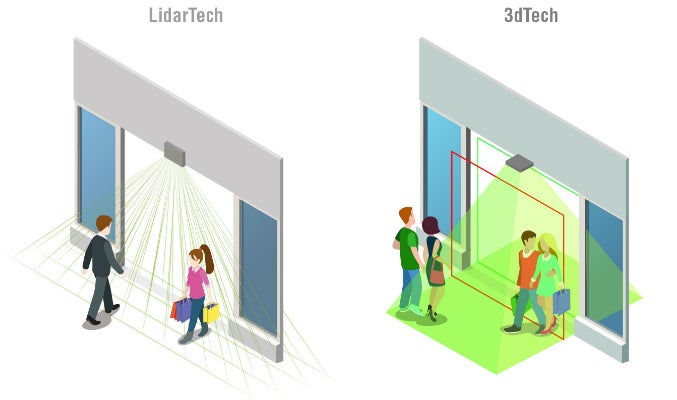
Acorel’s solutions count the number of people moving through access points at railway stations. The high-precision sensors are capable of detecting several people walking through access points at once, offering highly accurate data for analysis.
Depending on the surroundings and installation limitations, different sensors are available, including:
- Stereoscopic 3D sensors for applications that are on-board (public transport and railway transport) or static (such as metro stations, shops, buildings, airports and boarding gates)
- Laser sensors reserved for static applications (such as doors at train stations, shopping centres, theatres, ports or airports)
Together with the sensors, Acorel also offers intelligence in a combination setup (UCC, upstream channel change, or UT, unavailable time) which makes it possible, among other things, to access all counting data in real time as well as manage maintenance information.
High-precision 3D stereoscopic sensor
The high-precision stereoscopic sensor uses two different cameras to create a 3D image, which it analyses in real time to monitor movement in the detection field.
Only one sensor is required for each access point. It offers vertical counting with up to 98% accuracy, and can tell when a person has stopped moving through the access point by detecting prolonged or permanent presences within its detection field.
The sensors’ accuracy is proven by videos, which negate the need for costly, imprecise manual counting campaigns.
It is adapted for harsh environments: complies with the EN50155 standard, and is not affected by variations in temperature.
Laser sensor
Acorel’s laser sensor measures the distance between the sensor and people in its field of vision, based on the time-of-flight principle. Data from the sensor is transmitted to a counting system. Large entrances can be covered by one processing unit containing up to three laser heads.
The system offers vertical counting with up to 98% accuracy, even in complete darkness.
Acorel also offers ‘active and passive’ infrared sensors to customers. However these solutions offer reduced accuracy due to their sensitivity to light and temperature changes.
